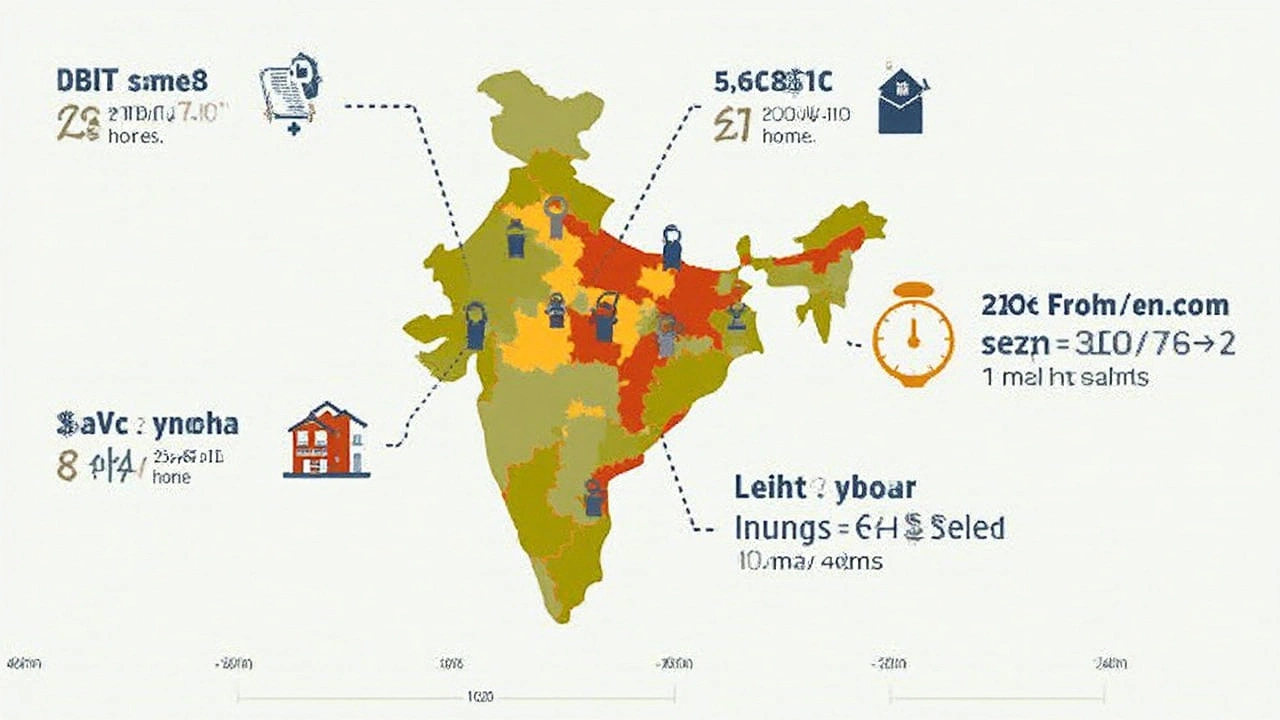Worried about how far your Section 8 voucher will stretch? You're not alone. Figuring out the actual max payment Section 8 covers is a common headache. The truth is, there's no one-size-fits-all number. Section 8 isn't like food stamps—it's not just a set monthly amount you can spend wherever you want. It's based on the fair market rent in your area, your income, and a few other details.
If you've heard your friend in another city gets way more help, that's no accident. Payment levels change, sometimes a lot, depending on where you live. For example, a two-bedroom voucher in San Francisco can be two or three times higher than one in Tulsa. I’ll get into how these numbers are set, what affects your personal cap, and share some tips for getting the most out of your voucher.
Here’s a quick reality check: Section 8 will almost never cover a $3,000 luxury apartment, but it can help with solid, safe places if you know what to look for. Stick with me and you’ll walk away with practical steps to stretch those dollars further—and avoid getting surprised by what counts as “too expensive” when the housing authority does the math.
- How Section 8 Sets Payment Standards
- What Influences Your Voucher Amount?
- Top Payment Example Scenarios
- Tips for Maximizing Your Voucher
- Going Beyond Maximum Limits
How Section 8 Sets Payment Standards
If you’ve ever heard someone mention “payment standards,” they’re talking about the rules that decide the Section 8 max payment in your city or county. These aren’t random numbers pulled from a hat—they come from what’s called the Fair Market Rent (FMR). The Department of Housing and Urban Development (HUD) sets FMR for every area in the U.S. based on real rents people are actually paying for basic, decent housing. It’s updated once a year, usually every fall.
Local housing authorities use these FMRs to set the maximum amount they’ll help with, and they'll usually set their standard somewhere between 90% and 110% of the FMR. Anything above that, you may be paying out of your own pocket—unless you get special approval. Here’s what these payment standards look like for a few different cities as of 2025:
| City | 1-Bedroom | 2-Bedroom | 3-Bedroom |
|---|---|---|---|
| San Francisco, CA | $2,430 | $3,170 | $4,130 |
| Tulsa, OK | $940 | $1,160 | $1,540 |
| Miami, FL | $1,670 | $2,140 | $2,750 |
It’s easy to see the huge range. Where you live makes a massive difference.
One key thing: payment standards are not the same thing as what you personally can spend. They’re more like the high score table—the max you’re allowed, not a guarantee. Your own max will depend on your income and the rent for the actual unit you want. Plus, these numbers don’t cover utilities, unless utilities are included in rent (like in some apartments). If you pay heat, gas, or electric separately, the housing authority adjusts your allowed rent with what they call a "utility allowance."
Bottom line? Before you even start searching for a place, check your local payment standard chart. Most Public Housing Authorities (PHAs) post these on their websites, and some even update a handy PDF every year. Knowing that number means you won’t waste time falling in love with a place that’s way out of reach for your voucher.
What Influences Your Voucher Amount?
The amount Section 8 will pay for your rent isn’t random. Several key factors decide how big your voucher is and what kind of rental you can realistically get. Think of it as a formula, not a guessing game.
First up, location is huge. Your local housing authority uses something called Fair Market Rent—set by the U.S. Department of Housing and Urban Development (HUD)—to decide the limits for your area. These limits can change each year and are based on what regular folks pay for modest apartments locally, not luxury spots. For example, HUD’s 2025 Fair Market Rent for a two-bedroom in Los Angeles is $2,089, while in Dayton, Ohio, it’s just $1,110.
| Metro Area | 2025 Fair Market Rent (2BR) |
|---|---|
| San Francisco, CA | $3,856 |
| Houston, TX | $1,429 |
| Atlanta, GA | $1,495 |
| Boise, ID | $1,386 |
| Buffalo, NY | $1,105 |
Next is your family size. The voucher isn’t for a specific address—it's tied to how many people are in your household. Bigger families get bigger vouchers, but that’s not the same as everyone having a private bathroom. It's about bedrooms: usually two people per room, sometimes exceptions for certain situations. That decides whether you qualify for a 1, 2, 3, or 4 bedroom payment standard.
Your income also matters, a lot. The idea is your share of the rent should be about 30% of your adjusted monthly income. If you earn more, the voucher will usually cover less. Earn less, the voucher covers more. Here’s where things can get tricky: if your rent is higher than the payment standard, you might have to cover the difference, but not beyond a certain cap when you first move in.
HUD explains it this way: “Your housing voucher covers the amount by which your rent exceeds 30% of your monthly income up to the payment standard set by your local housing agency.”
Other stuff matters, too. If you have unusual medical expenses, are elderly, or have a disability, you might get extra breaks when your payment share is calculated.
- Location = What’s considered reasonable rent where you live.
- Family size = Number of bedrooms you qualify for.
- Income = Your minimum share is always about 30%.
- Special situations = Medical/disability cost deductions.
So when you’re asking, “What’s the most Section 8 will pay?”—you really have to factor in all these moving parts. The more you know about the exact limits in your zip code and your own situation, the better you can plan and hunt for a place that fits both your needs and the voucher rules.

Top Payment Example Scenarios
Wondering what the ceiling really is for your Section 8, or what friends in other cities are getting? Straight talk—how much Section 8 will pay depends mostly on three things: the number of people in your family, the kind of place you need (studio, one-bedroom, etc.), and most of all, the area you live in. Every year, HUD sets the Fair Market Rent (FMR) for every region, and your housing authority picks a percentage (usually 90-110% of FMR) as their payment standard.
Let’s check out some real numbers for 2025, so you can see just how much these differences matter. Heads up: the maximum payment Section 8 covers is almost always lower than the top rent in the area. Here’s what payment standards look like for a two-bedroom in selected cities:
| City | Two-Bedroom Payment Standard (2025) |
|---|---|
| Phoenix, AZ | $1,620 |
| Baltimore, MD | $1,670 |
| Houston, TX | $1,420 |
| San Francisco, CA | $3,550 |
| Atlanta, GA | $1,700 |
As you can see, the jump from Houston to San Francisco is wild—more than double. But don’t forget, the payment standard is just the base for your specific rent cap. Here’s how it actually plays out in practice:
- If you qualify for a two-bedroom in Baltimore with a $1,670 payment standard, Section 8 usually covers rent up to that amount. If your rent goes higher, you pay the extra. But if your income is low enough, you only shell out 30% of it on rent and utilities, and Section 8 handles the rest, up to that standard.
- In San Francisco, let’s say you find a one-bedroom for $3,400. If your voucher’s payment standard is $3,300, you’ll be expected to make up the $100 difference yourself—on top of your normal share.
- But in Houston, if your family needs a three-bedroom, the payment standard might only be $1,800. If local rents push higher, you’ve got to get creative or be ready for more out-of-pocket costs.
One more thing—if you’re moving, keep these numbers in mind because payment standards reset by county or metro area. Always double-check the local FMR to avoid a nasty surprise at lease signing.
Tips for Maximizing Your Voucher
If you want your Section 8 voucher to go further, it pays to know the rules and use every trick in the book. A little planning makes a big difference. Here’s what actually helps:
- Check the Payment Standard: Your local housing authority sets a payment standard, which is basically their idea of a “typical rent” for your zip code and bedroom size. This isn’t the limit on what you can sign for, but it’s what they use to figure out their share. Payment standards are public info—Google your local housing authority plus 'Section 8 payment standards.'
- Pick Your Zip Code Carefully: Payment standards are often different within the same city. Some neighborhoods have higher limits. Even moving a few blocks can bump up the maximum that Section 8 will pay.
- Negotiate the Rent: Landlords can sometimes come down on price, especially if you’re a good applicant. Section 8 offers steady, guaranteed rent. Sell that point—some landlords just want reliable payment and less hassle collecting rent.
- Ask for Reasonable Accommodations: If you have a disability or specific medical need, you might qualify for a higher payment standard or extra utility support. Don’t be shy—housing authorities are used to these requests, and it's your right to ask.
- Watch Out for Extra Costs: Section 8 pays a share of the rent, but you cover the rest—including utilities not included in rent. Ask landlords about all costs before signing. Some places look affordable at first but sneak in high electricity or water bills.
Want to know the number one mistake? People forget to read the fine print on their voucher. If the unit’s rent is higher than the payment standard plus what you can contribute based on your income, you might get turned down by the housing authority. Double check before you put down a deposit.
If you’re moving, let your housing authority know early. There’s paperwork, waiting lists, and inspections—they’ll walk you through what you need, and it’s easier to snag the best deal if you plan ahead. Staying in touch and asking questions can save you money and headaches later.

Going Beyond Maximum Limits
Ever wonder if it’s possible to rent a place that costs more than what Section 8 usually allows? You’re not the only one. Housing authorities have strict payment standards, but they’re not totally locked in stone. Let’s break down how it works when you want a home with rent that’s higher than your voucher’s standard limit—or even if you just need a bigger place than average.
Section 8 sets a ceiling called Payment Standard, which is based on the Fair Market Rent (FMR) published by HUD for each area. But you can actually pick a place that’s priced over that limit. Here’s the catch: you’ll be responsible for paying the extra—what they call the “amount over the payment standard”—right out of your own pocket. And there are rules about how much you can chip in.
The biggest rule to watch out for is the 40% rule when you first move in. Section 8 generally won’t let you spend more than 40% of your adjusted monthly income on rent and utilities combined. If the apartment you want would push you over that, the housing authority won’t allow it—even if you’re willing to pay the difference yourself. After your first year, the rules about renter share loosen up, but that first move-in limit is non-negotiable.
| City | 2-Bedroom FMR | Max Payment (2024) |
|---|---|---|
| Houston, TX | $1,370 | $1,370 |
| Chicago, IL | $1,550 | $1,550 |
| San Francisco, CA | $3,530 | $3,530 |
These numbers show just how much voucher values can shift between cities. Now, if you find a spot that’s $100 above your local max, the only way to make it work is if your income and expenses allow you to pay that extra amount under the current rules. Some families do this to get a safer neighborhood or better schools, but it takes careful budgeting. Misjudge, and you could be on the hook for more than you realize.
If your area has really low vacancy, you might be able to ask the local housing authority to “raise the payment standard.” This usually only happens if there’s proof that rents have climbed for everyone and the market data backs you up. It’s worth asking about but doesn’t always work. Strong documentation like listings from apartment websites and letters from landlords can help your case.
Here are some steps if you want to rent above the payment standard:
- Calculate exactly how much over the limit your rent is.
- Ask the housing agency how much of your income you’d be expected to pay in total (rent + utilities).
- Check you’re not breaking the 40% rule before you sign anything.
- If you’re close to the edge, talk honestly with your caseworker about options—they might spot a workaround you missed.
Remember, max payment isn’t the same for everyone. Pushing past it comes with risks, but sometimes it’s the only way to get a home that fits your needs. Always do the math, get clear answers from your housing authority, and don’t be afraid to ask for help if the numbers get confusing.

